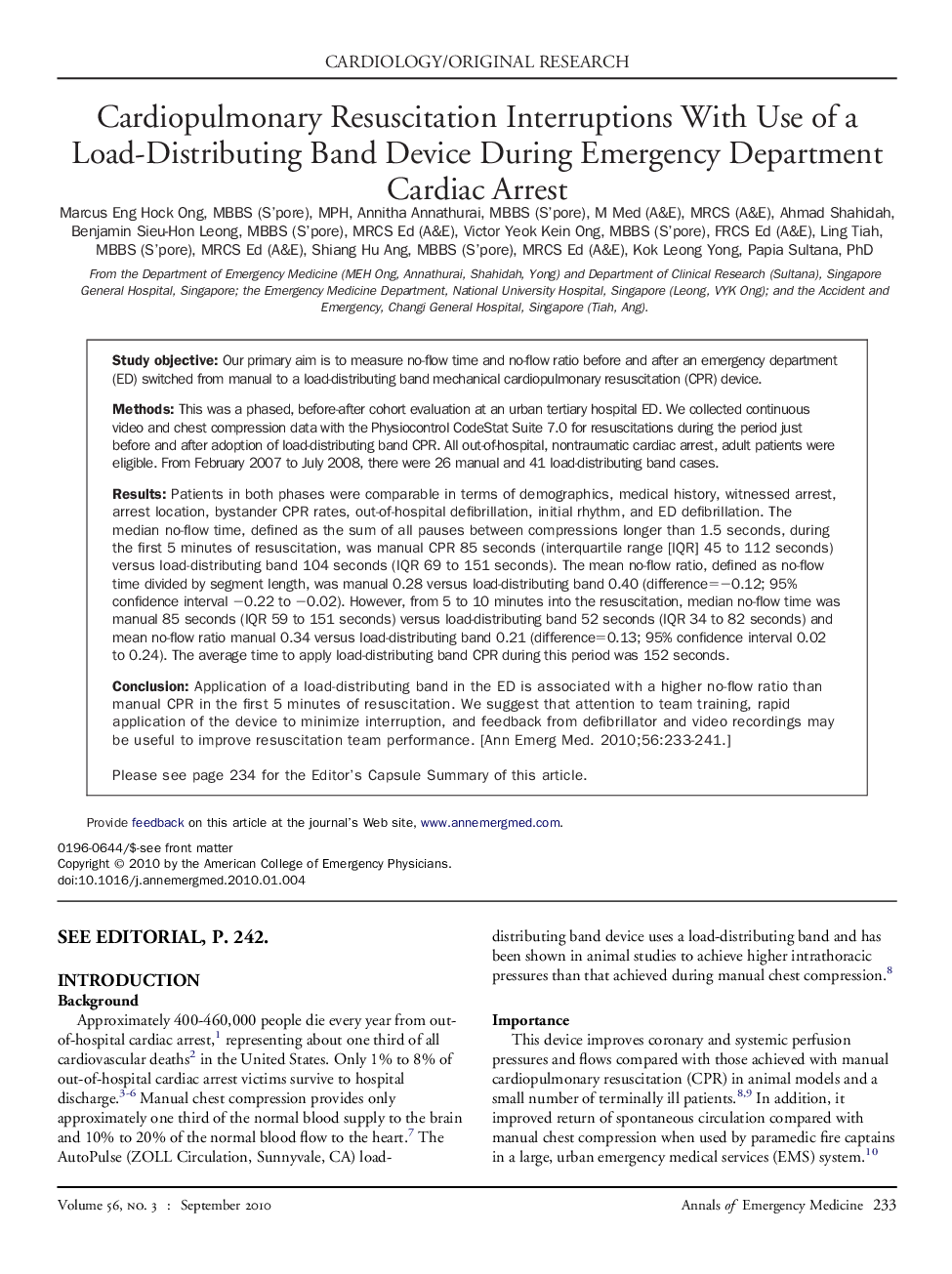| کد مقاله | کد نشریه | سال انتشار | مقاله انگلیسی | نسخه تمام متن |
|---|---|---|---|---|
| 3231500 | 1588581 | 2010 | 9 صفحه PDF | دانلود رایگان |

Study objectiveOur primary aim is to measure no-flow time and no-flow ratio before and after an emergency department (ED) switched from manual to a load-distributing band mechanical cardiopulmonary resuscitation (CPR) device.MethodsThis was a phased, before-after cohort evaluation at an urban tertiary hospital ED. We collected continuous video and chest compression data with the Physiocontrol CodeStat Suite 7.0 for resuscitations during the period just before and after adoption of load-distributing band CPR. All out-of-hospital, nontraumatic cardiac arrest, adult patients were eligible. From February 2007 to July 2008, there were 26 manual and 41 load-distributing band cases.ResultsPatients in both phases were comparable in terms of demographics, medical history, witnessed arrest, arrest location, bystander CPR rates, out-of-hospital defibrillation, initial rhythm, and ED defibrillation. The median no-flow time, defined as the sum of all pauses between compressions longer than 1.5 seconds, during the first 5 minutes of resuscitation, was manual CPR 85 seconds (interquartile range [IQR] 45 to 112 seconds) versus load-distributing band 104 seconds (IQR 69 to 151 seconds). The mean no-flow ratio, defined as no-flow time divided by segment length, was manual 0.28 versus load-distributing band 0.40 (difference=−0.12; 95% confidence interval −0.22 to −0.02). However, from 5 to 10 minutes into the resuscitation, median no-flow time was manual 85 seconds (IQR 59 to 151 seconds) versus load-distributing band 52 seconds (IQR 34 to 82 seconds) and mean no-flow ratio manual 0.34 versus load-distributing band 0.21 (difference=0.13; 95% confidence interval 0.02 to 0.24). The average time to apply load-distributing band CPR during this period was 152 seconds.ConclusionApplication of a load-distributing band in the ED is associated with a higher no-flow ratio than manual CPR in the first 5 minutes of resuscitation. We suggest that attention to team training, rapid application of the device to minimize interruption, and feedback from defibrillator and video recordings may be useful to improve resuscitation team performance.
Journal: Annals of Emergency Medicine - Volume 56, Issue 3, September 2010, Pages 233–241